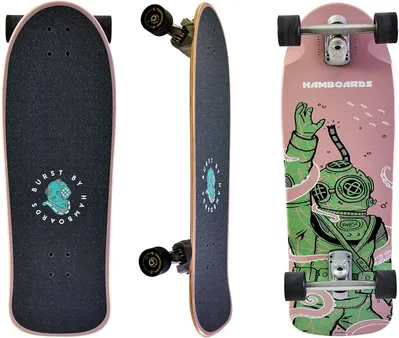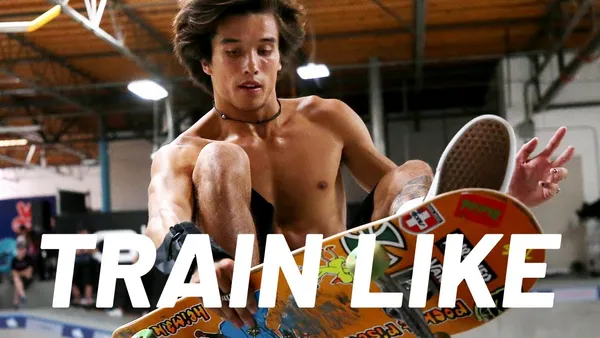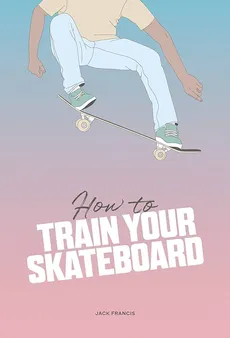Table of Contents
Welcome to Kizworld's definitive guide on How to train like a skateboarder. Whether you're a seasoned pro seeking to refine your skills or just starting your skateboarding journey, this comprehensive guide will provide you with the knowledge and tools you need to excel. We'll delve into strength training, balance and coordination exercises, essential stretches, cardio workouts, and tailored nutrition advice specifically designed to enhance your skateboarding performance. Get ready to unlock your full potential and take your skateboarding skills to new heights with kizworld.
How to Train Like a Skateboarder: Unleash Your Inner Thrill-Seeker
I. Skateboarding-Specific Exercises
Balance and Coordination Drills
- Single-leg stance: Stand on one leg for 30 seconds, then switch legs.
- Heel-toe walk: Walk forward and backward, placing your heel on your opposite foot's toes.
- Side-to-side hops: Hop from side to side, keeping your feet together.
- Front-to-back hops: Hop forward and backward, keeping your feet together.
- 360-degree turns: Stand with your feet shoulder-width apart and turn your body in a complete circle.
These drills will help you improve your balance and coordination, which are essential for skateboarding.
Strength Training Exercises
- Squats: Stand with your feet shoulder-width apart and lower your body by bending your knees and hips. Keep your back straight and your chest up.
- Lunges: Step forward with one leg and bend your knee so that your thigh is parallel to the ground. Keep your other leg straight and your back straight.
- Push-ups: Start with your hands shoulder-width apart on the ground and your feet together. Bend your elbows and lower your body until your chest touches the ground. Then, push yourself back up to the starting position.
- Pull-ups: Hang from a bar with your hands shoulder-width apart and your palms facing away from you. Pull yourself up until your chin is above the bar. Then, lower yourself back down to the starting position.
- Planks: Start with your forearms on the ground and your body in a straight line from your head to your heels. Hold this position for as long as you can.
These exercises will help you build strength in your legs, core, and upper body, which are all important for skateboarding.
Flexibility Exercises
- Hamstring stretch: Lie on your back with one leg extended and the other bent. Grab your extended leg behind your knee and pull it towards your body until you feel a stretch in your hamstring.
- Quad stretch: Stand with your feet shoulder-width apart and step forward with one leg. Bend your front knee and reach back with your other leg to grab your ankle. Pull your heel towards your buttocks until you feel a stretch in your quad.
- Calf stretch: Stand on a step or curb with your heels off the edge. Slowly lower your heels until you feel a stretch in your calves.
- Shoulder stretch: Stand with your feet shoulder-width apart and your arms at your sides. Raise your arms overhead and interlace your fingers. Pull your arms up and back until you feel a stretch in your shoulders.
- Back stretch: Stand with your feet shoulder-width apart and your knees slightly bent. Bend forward at the waist and let your arms hang down. Relax your head and neck.
These exercises will help you improve your flexibility, which is important for skateboarding.
Cardio Exercises
- Running: Running is a great way to improve your cardiovascular health and endurance. Aim for at least 30 minutes of running three times per week.
- Biking: Biking is another great way to improve your cardiovascular health and endurance. Aim for at least 30 minutes of biking three times per week.
- Swimming: Swimming is a low-impact exercise that is easy on your joints. It is also a great way to improve your cardiovascular health and endurance. Aim for at least 30 minutes of swimming three times per week.
- Elliptical training: Elliptical training is a low-impact exercise that is easy on your joints. It is also a great way to improve your cardiovascular health and endurance. Aim for at least 30 minutes of elliptical training three times per week.
- Jumping rope: Jumping rope is a great way to improve your cardiovascular health and endurance. It is also a fun and challenging way to get a workout.
These exercises will help you improve your cardiovascular health and endurance, which are important for skateboarding.
By following these tips, you can improve your skateboarding skills and take your skating to the next level.
For more information on how to train like a skateboarder, check out these related posts:
- How to Improve Your Skateboarding Skills Through Strength Training
- The Best Skateboarding Exercises and Workouts
- How to Learn the Basic Skateboarding Skills and Tricks
II. Building Strength and Balance
Building Strength and Balance
Balance and Coordination Drills
- Single-Leg Squats: Stand on one leg and slowly lower your body until your thigh is parallel to the ground. Hold for a few seconds, then return to standing.
- Heel-Toe Walk: Walk forward and back, placing your heel directly in front of your opposite toes, as if walking on a tightrope.
- Balance Board: Stand or crouch on a balance board and try to maintain your balance as it moves and tilts in different directions.
Explore More: Essential Stretches for Skateboarders
Strength Training Exercises
Exercise | Benefits | Sets/Reps |
|---|---|---|
Squats | Builds lower body and core strength. Improves balance and stability. | 3 sets of 10-12 reps |
Deadlifts | Strengthens back, posterior chain, and core. Improves explosive power. | 2 sets of 8-10 reps |
Bench Press | Targets chest, triceps, and shoulders. Improves upper body pushing power. | 2 sets of 8-10 reps |
Pull-Ups | Develops back, biceps, and grip strength. Improves upper body pulling power. | 3 sets of max reps |
Explore More: The Benefits of Physical Strength and Flexibility
III. Improving Flexibility and Coordination
Improving Flexibility and Coordination
To become a skilled skateboarder, it's crucial to develop flexibility and coordination. Gymnastics and parkour are excellent activities that can enhance these qualities. These disciplines offer exercises and drills that stretch and strengthen the muscles and joints, improving overall flexibility and coordination.
Regular practice of these activities can result in increased range of motion, better balance, and enhanced body control. Additionally, they can help reduce the risk of injuries by improving the body's ability to absorb impact and recover quickly.
- Gymnastics and parkour exercises emphasize dynamic movements, which are essential for skateboarding.
- Regular practice can enhance coordination between the hands and feet, enabling precise control over the skateboard.
- Improved flexibility and coordination also contribute to better balance on the board, allowing for smoother and more controlled skateboarding maneuvers.
Activity | Benefits for Skateboarders |
|---|---|
Gymnastics | Enhances flexibility, coordination, and balance. Increases strength and power. Reduces risk of injuries. |
Parkour | Improves agility, coordination, and balance. Develops problem-solving skills. Builds confidence and mental toughness. |
"Skateboarding requires a combination of strength, flexibility, and coordination. By incorporating gymnastics and parkour into your training routine, you can develop these qualities and become a better skateboarder."- Tony Hawk, professional skateboarder
Incorporating flexibility and coordination exercises into a skateboarding training regimen can lead to significant improvements in performance. These exercises can be easily integrated into a regular workout routine, helping skateboarders achieve their full potential and enjoy the sport to the fullest.
IV. Nutrition and Recovery
Nutrition and Recovery
Maintaining a balanced diet is crucial for skateboarders to fuel their bodies and aid in recovery. A nutritious diet should include:
- Carbohydrates: Provide energy for explosive movements and endurance.
- Proteins: Essential for muscle growth and repair.
- Fats: Provide energy and support hormone production.
- Vitamins and Minerals: Support overall health and immune function.
Staying hydrated is also vital for optimal performance and recovery. Water helps regulate body temperature, lubricate joints, and transport nutrients and oxygen to muscles.
In addition to a balanced diet, skateboarders should consider the following nutritional tips:
- Eat regular meals and snacks: Avoid skipping meals or going long periods without eating.
- Choose whole, unprocessed foods: Prioritize fruits, vegetables, whole grains, and lean proteins.
- Limit processed foods, sugary drinks, and unhealthy fats: These can hinder performance and recovery.
- Consume protein after workouts: This helps muscles repair and rebuild.
- Stay hydrated: Drink water consistently throughout the day, especially before, during, and after exercise.
By following these nutritional guidelines, skateboarders can optimize their performance, enhance recovery, and reduce the risk of injuries.
For more information on nutrition for skateboarders, check out our article on Skateboarding Nutrition: The Ultimate Guide.
V. Helpful Tips to Get the Most Out of Skateboarding Workouts
To maximize the benefits of skateboarding workouts, consider the following tips:
- Warm up before each session: This helps prepare your body for exercise and reduces the risk of injuries.
- Focus on proper technique: Mastering the basics of skateboarding is essential for safety and progression.
- Challenge yourself: Gradually increase the difficulty of your tricks and lines to continue improving.
- Take breaks when needed: Avoid overtraining and allow your body to recover.
- Stay motivated: Set goals, track your progress, and celebrate your achievements.
By following these tips, you can make the most of your skateboarding workouts and progress faster.
For more tips on getting the most out of skateboarding workouts, check out our article on How to Train Like a Skateboarder: The Complete Guide.
VI. Conclusion
As you embark on your skateboarding journey, remember that consistency and dedication are key. Embrace the challenges, learn from your falls, and celebrate your successes. With the knowledge and techniques gained from this comprehensive training guide, you're well-equipped to push your limits and unlock your full potential as a skateboarder. So, lace up your shoes, grab your board, and let the world be your skatepark. The road to becoming a skateboarding master starts now.